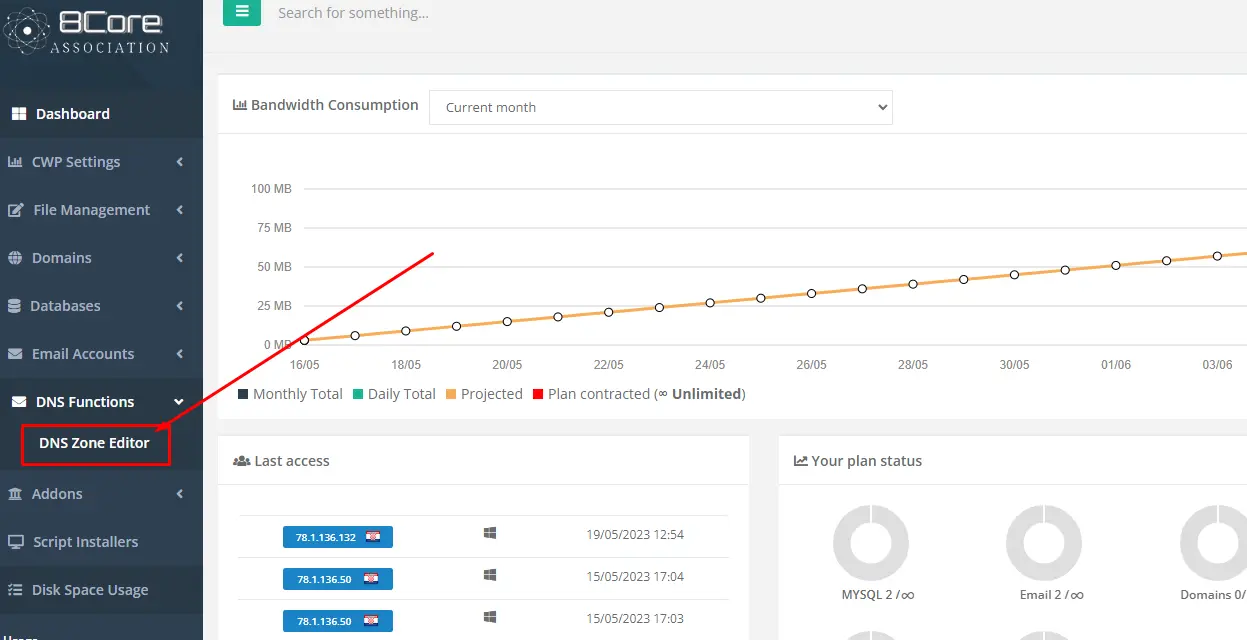in your DNS editor on the control panel, the "A" record is probably one of the first things you see
and the record looks something like this
@ sign or domain name under "Record name"
The letter "A" under "Type" or type of record, as we said "A"
Some kind of number under TTL or Time to live, for example 14440, which would mean that the dns server refreshes the record every 14440 seconds and checks if it is still the same. 86400 is for example 24 hours, 3600 is 1 hour.
And finally IP address as record in case of A record "254.124.54.215"
You can see your IP address on the home page of the control panel under the server information tab.
The function of a record is to direct your domain to the starting directory of your web server, i.e. your website or ...
if you add "@" to the "Record name" field, the record will refer to the starting "Root" directory of your installation, which is in some standard "public_html" unless you change it.
or like this
When someone writes vasadomena.com in the address bar of the browser, the dns server directs it to the server's public_html directory at the ip address that you added under "record" of the same record.
If you add, for example, "forum" under "record name" instead of "@", you have created a dns record for the sub-domain that would look like this:
forum.yourdomain.com
it's like "www" for you
because that famous "www" in reality is nothing but a sub domain.
Subscribe to new posts!
A little about AAAA
What is that...
Since in our moderate and reasonable world, there is a shortage of IPv4 addresses, that is, of these combinations "182.198.4542.78" (some four billion combinations)
The IT industry has devised an IPv6 address (IP Version 6) whose record looks something like this:
FE80:CD00:0000:0CDE:1257:0000:211E:729C
To be precise, an IPv6 address is 128 bits long and is divided into eight groups, each of which has 16 bits. Each group is expressed as four hexadecimal digits, and the groups are separated by colons.
While IPv4 is approx
192.168.10.150
IPv4 uses a 32-bit address, which is the format you're probably most familiar with when we talk about "IP address". This 32-bit address space provides nearly 4.3 billion unique addresses, although some IP blocks are reserved for special uses.
Therefore, the "AAAA" record is the same as "A" for the IPv6 version only




